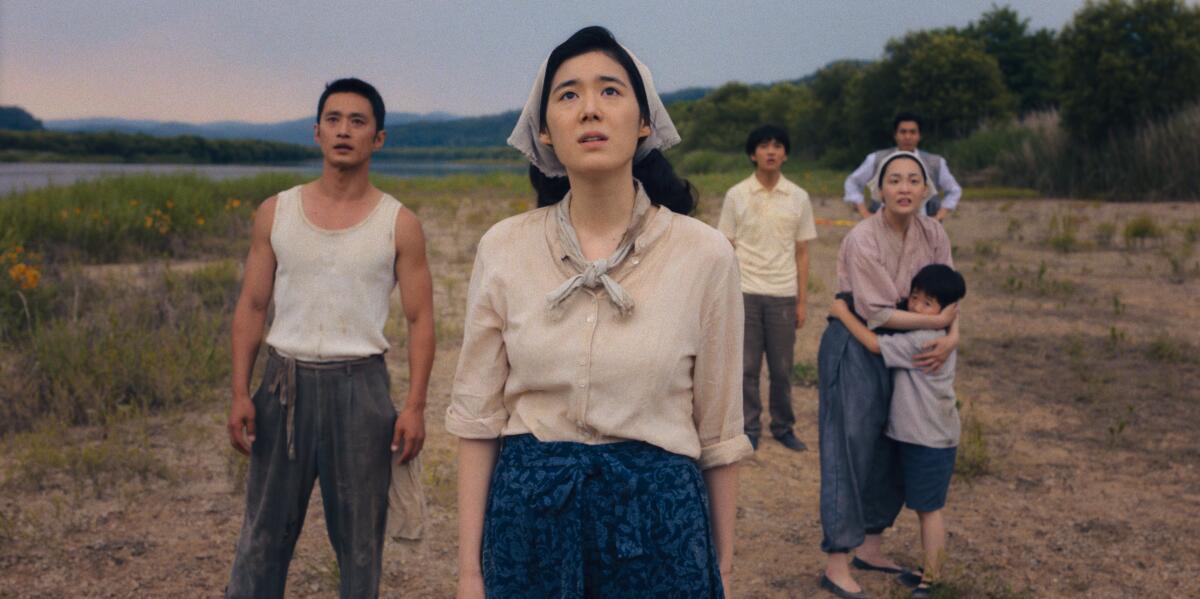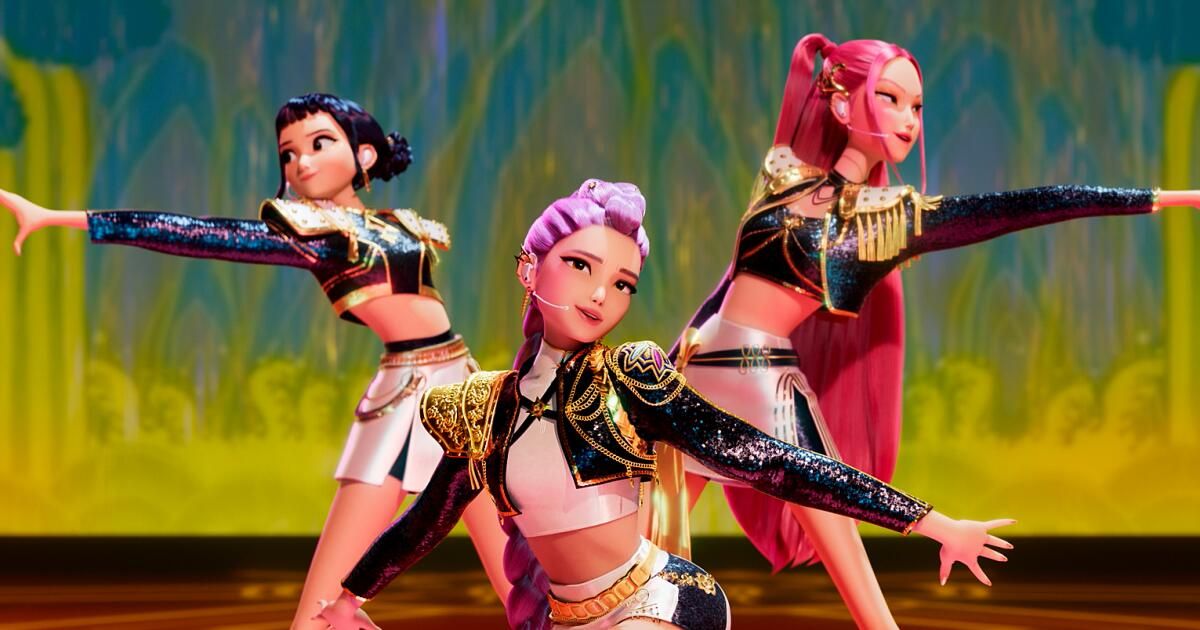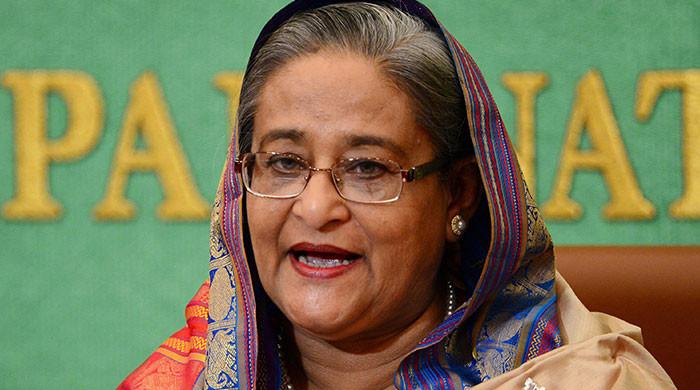Seoul – When the South Koreans begin to become obsessed with a television movie or series, they abbreviated their name, a distinction given to Netflix's last success “K-Pop Demon Hunters”. In the media holders and in every internet corner, the American manufacturing film is now universally known as “Keh-Deh-Hun”, the first three syllables of the title when read aloud in Korean.
And the public already cry out for a sequel.
The animated film follows a fictitious group of South Korean girls called “Gift/X” as its three members, Rumi, Mira and Zoey, try to deliver the world of evil through the power of the song and the K-Pop fandom.
Since its launch in June, it has become the original animated film more seen in the history of Netflix, with millions of views worldwide, including the United States and South Korea, where its soundtrack has headed the lists on the Melon local music transmission platform. Fans have also cleaned the gift shop at the National Museum of Korea, which has run out of a traditional tiger pin that resembles one of the characters in the film.
Much of the popularity of the film in South Korea is rooted in its details and references of Korea, pop culture and even national habits, the result of having a production team full of K-Pop fans, as well as a group travel trip to South Korea, co-director Maggie Kang led to document the details of the details as minute as the local appearance.
There are winks to traditional Korean popular painting, a Korean guide of future life, K-pop parents and everyday gestures. In a scene, at a table in a restaurant where the three girls eat, spectators can notice how utensils are placed on a napkin, an essential ritual for dinner in South Korea, along with pouring water cups for everyone at the table.
“The more I see 'Keh-Deh-Hun', the more I notice the details,” said South Korea music critic Kim Yoon-Ha to local media last month. “He managed to achieve a likelihood that would leave any astonished Korean.”
:
“K-Pop Demon Hunters” has a wink to traditional Korean popular painting, a Korean guide of future life, K-pop parents and every day gestures
(Netflix)
Despite its theme and association with the “W-Wave”, that term all for each and every one of the Korean cultural exports, “K-Pop Demon Hunters”, at least in the narrowest sense, does not conform to the bill.
Produced by Sony Pictures and led by Kang and Chris Appelhans, Canadians Koreans, who have had creative roles in other animated films such as “Coraline” and “Fantastic Mr. Fox”, the film is mainly in English and is oriented towards non -Korean audiences. But its popularity in South Korea is another sign that the limits of the K wave are increasingly fluid, and that, with more and more Korean artists of the diaspora that enter the mixture, it also flows in the opposite direction.
These barriers have already been broken down into music: many K-Pop artists and composers are not Korean or are part of the Korean diaspora, which reflects the history of the genre of foreign influences such as Japanese pop or American hip-hop.
“Once a cultural creation acquires a universality, it cannot simply limit it to the borders of the country of origin, which is where K-Pop is today,” said Kim Il-Joong, director of the Content Business Division of the Creative Content Agency of Korea, a government agency whose mission is to promote the South Korean content of the whole world. “Despite what the name 'K-Pop' suggests, it is really a global product.”
In “K-Pop Demon Hunters”, Zoey is a bubane rapper. In addition, the soundtrack was written and interpreted by a team that includes producers, artists and choreographers associated with some of the K-Pop groups of the real life of the last decade.
Transmission productions are also flying more and more flags: “Pachinko” of Apple TV or “XO, Kitty” of Netflix are US productions that were filmed in South Korea. But few productions have been able to inspire the same level of enthusiasm a lot as the “K-Pop demon hunters”, whose charm for many South Koreans is the precision that local idiosyncrasy capture and contemporary life capture.
While they fly in their private jet, the three girls are sitting on the floor even though there is a sofa just by their side. This tendency to use sofas as little more than backups is an endless source of humor and autofascation between the South Koreans, most of whom would agree that the customary custom of sitting on the floor dies hard.
Fans and the media of South Korea have noticed that the characters correctly pronounce “Ramyeon” or Korean instantaneous noodles. The fact that Ramyoon is often combined with Japanese ramen, which inspired the invention of the former decades ago, has long been an exasperation point for many South Koreans and local companies in Ramyeon, which points to the fact that Korean adaptation has become something different.
It is a small difference: the Korean version is pronounced “Rah Myun”, but one that is worth in South Korea.

“Pachinko” of Apple TV, with Sungkyu Kim, Eunchae Jung and Minha Kim, is an American production filmed in South Korea.
(Apple)
The cravings of the girls for Ramyeon during their flight also caught the attention of Ireh, a member of the South Korean girls group of real life Purple Kiss who praised the representations of the life of the film as an artist K-Pop.
“Normally not like Ramyeon, but every time I go on tour, I end up eating it,” he said in a recent interview with local media. “The scene reminded me of myself.”
South Korea fans have also been delighted by a couple of animals, Derpy and Sussy, who borrowed from JakhodoA genus of traditional Korean folk painting in which the tigers and urracas are represented side by side, popularized during the Joseon dynasty in the nineteenth century.
In the film, Derpy is the fluorescent tiger with glasses of glasses that always appears with his partner, a three -eyed bird called Sussy.

“K-Pop Demon Hunters” is dotted with tributes to Korean artists throughout history that are seen today as the parents of contemporary K-Pop.
(Netflix)
Although they have long been extinguished, the Tigers were once a feared presence in the Korean Peninsula, sometimes coming down from the mountains to terrorize the population. They were also revered as talismans that protected evil spirits. But like derpy himself, Jakhodo The reinvented tigers as more friendly and comic beings. Historians have interpreted this as the political satire of the time: the Urraca, bold in the presence of a great predator, represented the common man who faced the nobility.
The film is dotted with tributes to Korean artists throughout history that are seen today as the parents of contemporary K-Pop. There are apparent winks to the “Jeogori Sisters”, a three -piece attire that was active from 1939 to 1945 is already described as the first group of Korean girls, followed by the Kim sisters, another three pieces that found success in the United States, acting in Las Vegas and appearing in “The Ed Sullivan Show”.
K-POP fans for a long time could recognize demon hunters from the 1990s such as SES, a pioneering group of girls formed by SM Entertainment, the seal behind the current superstars Aespa and Red Velvet. (Bada, the main vocalist of SES, recently covered “Golden”, the main song of the film, on YouTube).
For a long time, the South Korean public has often complained about the country's external representations as authentic and out of contact. Not anymore.
“Korea was not only as an additional complement as it has been for so long,” Kim said. “'K-Pop Demon Hunters' did a great job representing Korea in a way that made him instantly recognizable for the public here.”












